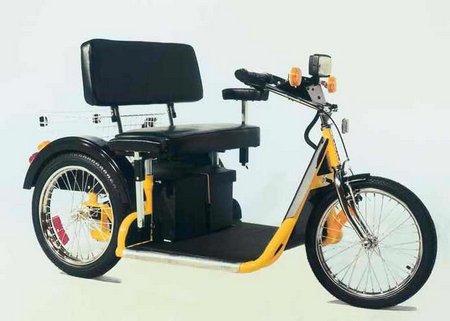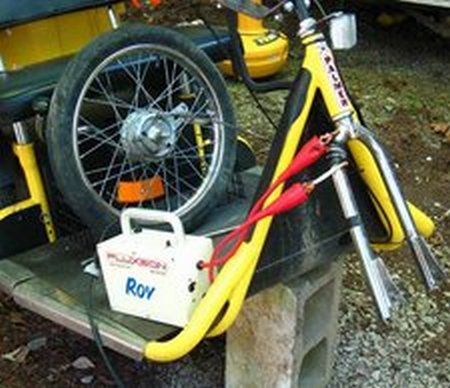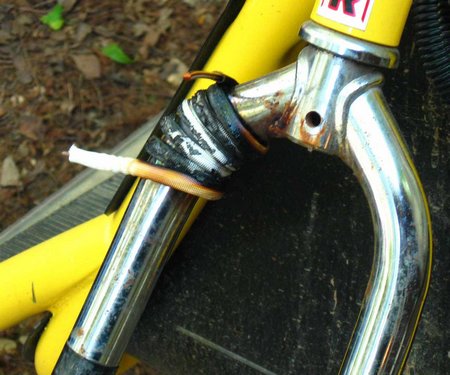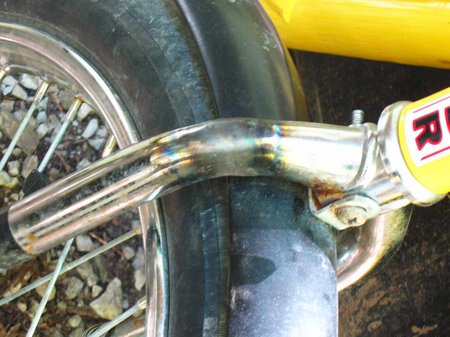For the last year I’ve been buried up to my neck in designing induction heaters. That’s also why I haven’t kept this blog up to date. That’s about to change. Since I’ve been working on Induction Heaters, that is what I’m going to write about.
The next few articles will take a look at various ways an induction heater can be used. Particularly the ones that I designed :-)
One of the most versatile heater designs for low to medium powered heaters is the Royer Architecture. That architecture is explained in the Mini-Ductor® Review [1] and in this article [2]. The later article describes “Roy”, the Royer-based heater sold by Fluxeon® [3].
Bent Fork Repair
I’m semi-handicapped due to arthritis in my knees and ankles so I have
one of these scooters to get around the local area.
Anyway, I was headed down my driveway last Friday when the front brake locked up, broke the hub’s retaining strap, wound up the brake cable and flipped the wheel off the forks. When the dust settled, one fork tube was bent about 15 deg forward and perhaps 25 degrees outward.
I was sick. I just knew that I’d have to buy a new fork and wait for it to arrive. I stewed on it for a day and decided to try to heat the bent area and push the fork back into place. Given the location of the bend, I could not use a torch unless I disassembled the steering head. So I got out Roy Rev 1.0 and decided to give him a shot at it.
I took a length of #10 solid copper wire and sleeved it with fiberglass/silicone sleeving for high temperature insulation. I wrapped 6 turns of this wire around the bent area, spacing the turns about a wire diameter apart to cover the entire bent area.
I had the help of my friend Danny. While I held the handlebars and the heater, he would push on the fork tube to put it back into place. We used no leverage extender.
I pressed the button. Nothing. Sheepishly noting that I had not closed the breaker, I did so and pressed the button again. Silent heat. Within a minute the area under the winding was bright cherry red. Danny grabbed the fork and pushed it back into place. I let the work cool naturally.
After I put the wheel and plastic fender back on, I heated the work again to remove any residual stress caused by cinching up the wheel nuts. After the work cooled, I fitted and welded a small gusset on the back side of the heat affected zone to restore any strength that may have been lost from the heat treatment. The steering head remained cool enough to touch throughout the heat. As you can see here,
The heat affected zone barely extended past the end of the coil. Notice how defined and confined the heat affected zone is.



